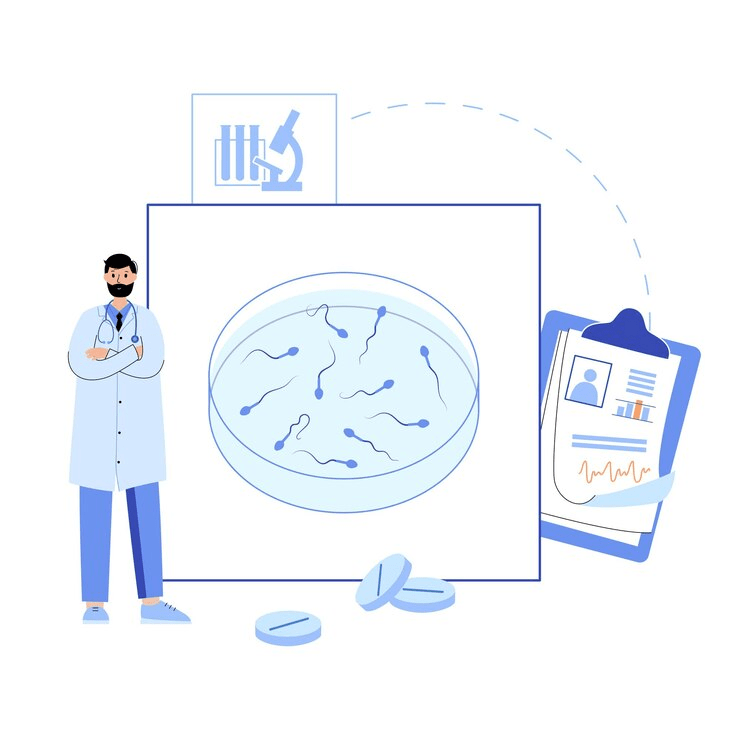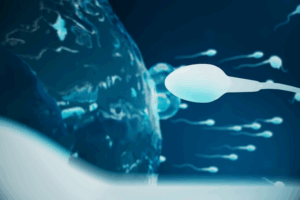
Gene therapy for azoospermia treatment
Introduction Male infertility, especially caused by azoospermia, affects millions of men worldwide. For those suffering from non-obstructive azoospermia, treatment options have been limited. However, thanks

Nonobstructive Azoospermia Treatment is a medical condition characterized by the absence of sperm in the ejaculate due to impaired or failed sperm production in the testes. This is different from obstructive azoospermia, where sperm production is normal but blocked from reaching the ejaculate.
For men diagnosed with NOA, Nonobstructive Azoospermia Treatment represents a crucial step toward restoring fertility and achieving the goal of fatherhood. Advances in reproductive medicine have expanded treatment options, from hormonal therapies to surgical sperm retrieval techniques, offering renewed hope for affected men.
This comprehensive guide covers the causes, diagnostic process, and all major treatment strategies for nonobstructive azoospermia, helping patients and families understand this complex condition and the options available.
NOA results primarily from problems in the testes that impair sperm production, including:
Genetic abnormalities: Conditions like Klinefelter syndrome, Y chromosome microdeletions, or other chromosomal defects can hinder sperm production.
Testicular failure: Damage from infections, trauma, chemotherapy, radiation, or undescended testicles.
Hormonal imbalances: Low levels of follicle-stimulating hormone (FSH) or luteinizing hormone (LH), which regulate sperm production.
Idiopathic causes: Sometimes, the cause is unknown despite thorough evaluation.
Nonobstructive azoospermia accounts for approximately 10-15% of male infertility cases and affects about 1% of all men.
Accurate diagnosis is the cornerstone for effective Nonobstructive Azoospermia Treatment. Diagnosis involves:
Understanding the patient’s health background, genetic factors, past illnesses, surgeries, or exposure to toxins.
Checking testicular size, consistency, and any abnormalities.
Repeated semen tests to confirm azoospermia and exclude temporary causes.
Measuring blood levels of FSH, LH, testosterone, and prolactin to identify hormonal causes.
To detect chromosomal abnormalities or microdeletions linked to NOA.
This invasive procedure evaluates the presence and quality of sperm production directly from testicular tissue.
Treatment of NOA is complex and tailored to the underlying cause. Here are the main treatment strategies:
Hormonal therapies may help in cases where hormonal imbalances are identified.
Gonadotropin therapy: Administering FSH and LH analogs to stimulate sperm production.
Clomiphene citrate or aromatase inhibitors: Used to increase endogenous testosterone levels.
Effectiveness: Hormonal treatments benefit a limited subset of NOA patients and are often combined with other interventions.
When natural sperm presence in semen is absent, sperm can sometimes be retrieved directly from testicular tissue for use in assisted reproductive technologies (ART).
Testicular Sperm Extraction (TESE): Surgical removal of small testicular tissue samples to find viable sperm.
Microdissection TESE (micro-TESE): An advanced microsurgical technique that identifies and extracts sperm from individual seminiferous tubules, increasing sperm retrieval success.
Percutaneous Epididymal Sperm Aspiration (PESA): Less invasive, usually for obstructive azoospermia but sometimes attempted in NOA.
Success Rates: Micro-TESE has the highest sperm retrieval rates in NOA patients, ranging from 40-60%.
Once sperm are retrieved via surgery, they can be used with Intracytoplasmic Sperm Injection (ICSI), a form of IVF where a single sperm is injected directly into the egg.
This allows men with NOA to father biological children despite severely impaired sperm production.
ICSI combined with surgical sperm retrieval is currently the most effective treatment option for NOA.
Stem Cell Therapy: Research is ongoing on using stem cells to regenerate sperm production.
Gene Therapy: Targeting genetic causes to restore spermatogenesis.
Artificial Gametes: Laboratory-grown sperm cells, still in early research phases.
While medical treatments address physiological issues, lifestyle modifications can optimize fertility potential:
Avoid smoking, excessive alcohol, and recreational drugs.
Maintain a healthy weight and balanced diet rich in antioxidants.
Reduce exposure to environmental toxins and heat.
Manage stress through counseling and support groups.
Complete cure depends on the cause. Some men respond well to hormonal therapy, while others require surgical sperm retrieval with ART.
Procedures like micro-TESE are performed under anesthesia. Recovery involves minor discomfort but typically no major pain.
With micro-TESE and ICSI, about 40-60% of men with NOA can father biological children.
Rahim was diagnosed with NOA due to Y chromosome microdeletion. After micro-TESE, viable sperm were retrieved and used in ICSI. His wife conceived naturally, and they now have a healthy baby.
John had low FSH and LH levels impairing sperm production. After six months of hormonal therapy, sperm appeared in his semen, allowing for natural conception.
For effective Nonobstructive Azoospermia Treatment, choosing an experienced fertility center is crucial:
Look for clinics specializing in male infertility and offering advanced sperm retrieval techniques.
Ensure availability of genetic counseling and comprehensive diagnostic services.
Verify success rates and patient reviews.
Nonobstructive azoospermia once meant a bleak outlook for many men wishing to father children. Today, advancements in diagnostic techniques, surgical sperm retrieval, and assisted reproduction offer real hope. With personalized treatment plans, many men with NOA achieve successful pregnancies and fatherhood.
If you or a loved one is facing NOA, consult a fertility specialist to explore tailored treatment options. Early diagnosis and intervention can improve outcomes and bring dreams of parenthood closer to reality.

Introduction Male infertility, especially caused by azoospermia, affects millions of men worldwide. For those suffering from non-obstructive azoospermia, treatment options have been limited. However, thanks

Azoospermia is one of the most challenging causes of male infertility, often leaving men with few options and couples struggling to conceive. But today, an
PROLISTEM® is a Patented Formula
Copyright © 2025 Prolistem®